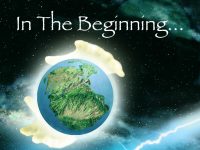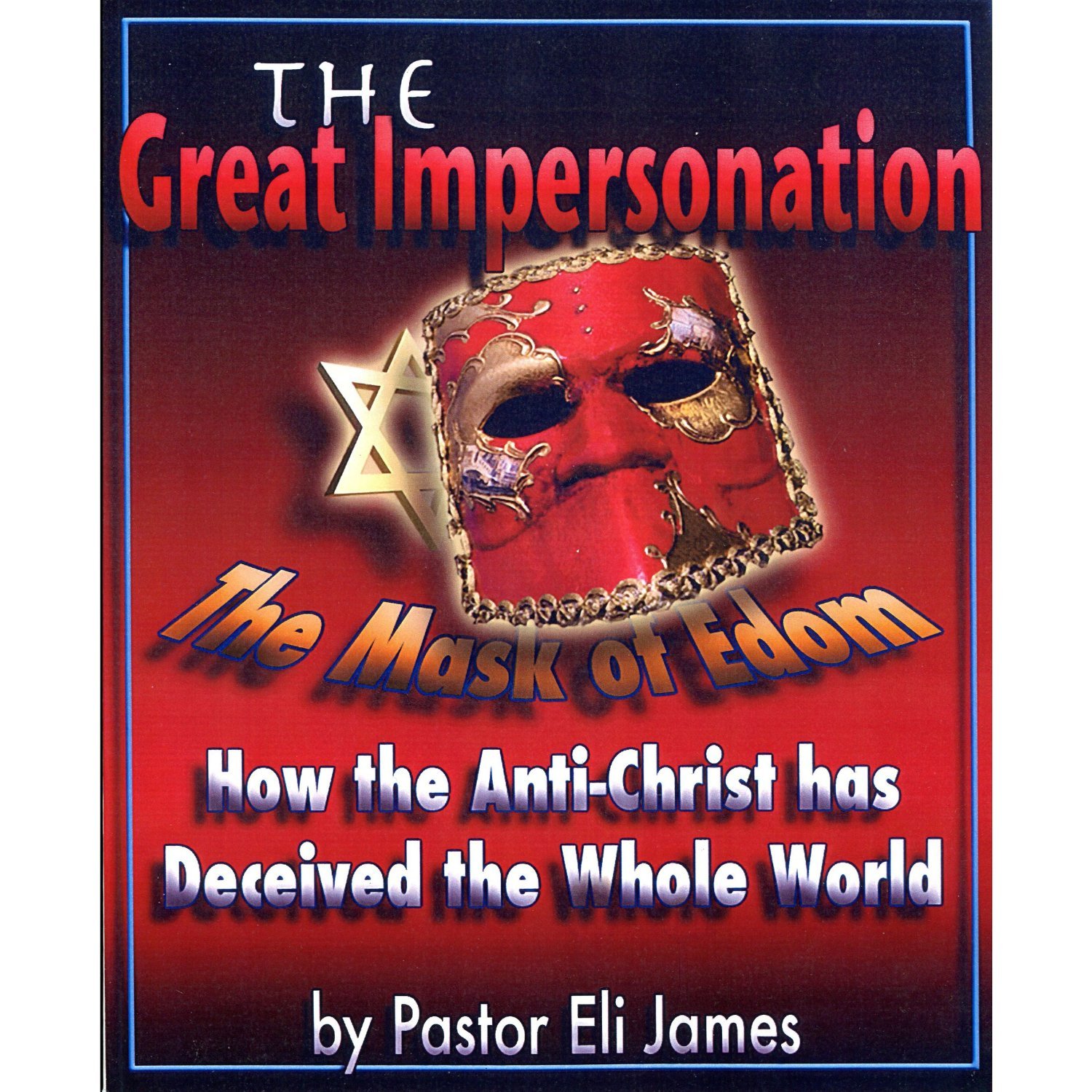Quantum Mechanics Proves the Existence of God
Atheistic scientist gets his theory fried.
Atheists are simpletons who think they “know” that there is no God. They are quite confident of their opinion. The video above and the quotations below prove that they know nothing about the universe, which is telling honest scientists, through quantum mechanics, that the universe was created WITH INTELLIGENT DESIGN.
Here are some quotations by REAL SCIENTISTS, who disagree with the atheists:
“Self-consciousness and the ability to perform intelligent action are inescapable aspects of our everyday experience, just as certain to us as our possession of bodies composed of physical matter. Thus any theory which seeks to explain the emergence of biological life on the planet must also explain convincingly the appearance of intelligence and consciousness.
“This chapter explains briefly how chemical substances that comprise the building blocks from which living forms are constructed may have arisen initially on the earth. The following chapter reviews hypotheses that have attempted the much more difficult task of accounting for the infusion of biological life into these inert substances to bring about the emergence of primitive living forms. When pressed to their biological conclusions can such hypotheses support the concept, widely accepted by scientists, that matter is primal and that life and intelligence are secondarily derived functions? Or shall we be driven to conclude that they cannot stand up to such close scrutiny, so that we are compelled to accept the alternative hypothesis that life, intelligence and consciousness are the primal realities, and that their expression in biological forms on earth is the secondary event?” – p. 83, Intelligence Came First, edited by E. Lester Smith, Theosophical Publishing House, 1975.
“All matter originates and exists only by virtue of a force which brings the particles of an atom to vibration and holds this most minute solar system together. We must assume behind this force the existence of a conscious and intelligent mind. This mind is the matrix of all matter.” – Matter, Energy and Consciousness, by Max Planck
“Today there is a wide measure of agreement, which on the physical side of science approaches to almost unanimity, that the stream of knowledge is heading towards a non-mechanical reality; the universe begins to look more like a great thought than like a great machine. Mind no longer appears as an accidental intruder into the realm of matter; we are beginning to suspect that we ought rather to hail it as the creator and the governor of the realm of matter.” – Sir James Jeans, The Mysterious Universe.
“We now come to the third important modification in our fundamental concepts brought about by the quantum theory; namely, that the world cannot be analyzed correctly into distinct parts; instead, it must be regarded as an indivisible unit in which separate parts appear as valid approximations only in the classical unit…Thus, at the quantum level of accuracy, an object does not have any ‘intrinsic’ properties (for instance, wave or particle) belonging to itself alone; instead, it shares all its properties mutually and indivisibly with the systems with which it interacts.” – David Bohm, Quantum Theory, p. 161. (1951.)
“The fool hath said in his heart, There is no God.” – Ps. 14:1; 53:1.
As Gary Zukav puts it,
“Laser fusion and the great quark hunt are endeavors within the existing paradigms of physics. A paradigm is an established thought process, a framework. Both quantum logic and Bell’s theorem are potentially explosive in terms of existing frameworks. The first (quantum logic) calls us back from the realm of symbols to the realm of experience. The second (Bell’s theorem) tells us that there is no such thing as ‘separate parts.’ All of the parts of the universe are connected in an intimate and immediate way previously claimed only by mystics and other scientifically objectionable people.” – p. 272, The Dancing Wu Li Masters, An Overview of the New Physics.
“Gray are all the theories, but green is the Tree of Life.” — Goethe.
“Nonlocal mind is a term I introduced in 1989 to account for some of the ways consciousness manifests, ways suggesting that it is not completely confined or localized to specific points in space or time. Nobel physicist Erwin Schroedinger believed that mind by its very nature is singular and one, that consciousness is not confined to separate, individual brains, that it is ultimately a unified field. David Chalmers, a mathematician and cognitive scientist from the University of California at Santa Cruz, has suggested that consciousness is a fundamental in the universe, perhaps on a par with matter and energy, and that it is not derived from, nor reducible to anything else. Nobel physicist Brian Josephson, of Cambridge University’s Cavendish Laboratory, has proposed that nonlocal events at the subatomic level – for example, the fact that there are correlations between the spin of subatomic particles, even after they are separated – can be amplified and may emerge in our everyday experience.
In other words, the macrocosm reflects the microcosm. System theorist Erwin Laszlo believed that nonlocal mind may mediate events such as intercessory prayer, telepathy, pre-cognition, and clairvoyance.
If consciousness is unbounded and unitary, strikingly similar thoughts and behaviors of identical twins, even separated twins, would not be surprising. Genes do determine how individual brains function, how we each process information, and nonlocal mind could be easier to access if two brains were almost identical in their functioning. Indeed, some people see analogies between the behavior of separated twins and separated, identical particles.
According to the late Irish physicist John S. Bell, if two subatomic particles once in contact are separated to some arbitrary distance, a change in one is correlated with a change in the other – instantly and to the same degree. There is no travel time for any known form of energy flow between them. Yet experiments show that these changes do occur, instantaneously. Neither can these nonlocal effects be blocked or shielded – one of the hallmarks of nonlocality. Perhaps distant twins are mysteriously linked, like distant particles – or to quote Ecclesiastes, ‘All things go in pairs, one the counterpart of the other.’” – Larry Dossey, MD, “Beyond Nature and Nurture: Twins and Quantum Physics,” Psychology Today, July/August 1997.
“The limitations imposed here on visual representation can be formulated with greater accuracy with the aid of a relationship, called the uncertainty principle which is based on the quantum theory. It can be expressed in the simplest terms as follows: One can never know simultaneously with perfect accuracy both of these two important factors which determine the movement of one of the smallest particles — its position and its velocity. It is impossible to determine accurately both the position and the direction and speed of a particle at the same instant. If we determine experimentally its exact position at any given moment, its movement is disturbed to such a degree by that very experiment that we shall then be unable to find it at all. And conversely, if we are able to measure exactly the velocity of a particle, the picture of its position becomes totally blurred.” — Werner Heisenberg, Nuclear Physics, pp. 29-30.
Amaury de Reincourt sums up the situation this way:
“One of the ultimate consequences of Heisenberg’s Principle of Indeterminacy is that the basic structure of living matter lies below the threshold of its ‘indeterminacy.’ At the turn of the century, it was still possible to believe in the natural extension of physical and mechanical determinism to organic as well as to inorganic matter, and to believe that living matter was just a more complex form of physical organization, such as a computer, but obeying some ironclad laws of dead matter. And, if by chance, atoms and molecules behaved differently in living organisms, it should be possible to find a strictly physic-chemical interpretation for it.
Quantum mechanics now explain the complete meaninglessness of such a viewpoint: the greater our knowledge about the state of the atoms inside a living organism, the greater the disturbance caused by the act of observation and measurement. Werner Heisenberg has pointed out with Neils Bohr that ‘It may well be that a description of the living organism that could be called complete from the standpoint of the physicist cannot be given, since it would require experiments that interfere too strongly with the biological functions.’ For example, let us take the smallest living entity, a virus; this virus can only be seen through an electron microscope – but since the virus cannot possibly survive the bombardment of electrons, all we can see is a dead, lifeless virus – a virus deprived of that one quality we want to study scientifically, its life. Schrodinger clinches the matter by reminding us that ‘…incredibly small groups of atoms, much too small to display exact statistical laws, do play a dominating role in the very orderly and lawful events within a living organism. They have control of the large-scale features which the organism acquires in the course of its development.’ The gap between organic and inorganic matter cannot be spanned.” P. 178, The Eye of Shiva, Eastern Mysticism and Science.
When Max Planck received the Nobel Prize for physics, he stated to the scientific materialists in the audience: “As a man who has devoted his whole life to the most clear-headed science, to the study of matter, I can tell you as the result of my research about the atoms this much: There is no matter as such! All matter originates and exists only by virtue of a force which brings the particles of an atom to vibration and holds this most minute solar system of the atom together… We must assume behind this force the existence of a conscious and intelligent mind. This mind is the matrix of all matter.”
Neils Bohr agrees:
“The existence of life must be considered as an elementary fact that cannot be explained, but must be taken as a starting point in biology, in a similar way as the quantum of action, which appears as an irrational element from the point of view of classical mechanical physics, taken together with the existence of elementary particles, forms the foundation of atomic physics.” – 1933 Lecture, “Light and Life.”
We would like to emphasize a very important difference between classical and quantum mechanics. We have been talking about the probability that an electron will arrive in a given circumstance. We have implied that in our experimental arrangement (or even in the best possible one) it would be impossible to predict exactly what would happen. We can only predict the odds! This would mean, if it were true, that physics has given up on the problem of trying to predict exactly what will happen in a definite circumstance. Yes! Physics has given up. We do not know how to predict what would happen in a given circumstance, and we believe now that it is impossible—that the only thing that can be predicted is the probability of different events. It must be recognized that this is a retrenchment in our earlier ideal of understanding nature. It may be a backward step but no one has found a way to avoid it.
No one has figured a way out of this puzzle. So at the present time we must limit ourselves to computing probabilities. We say “at the present time,” but we suspect very strongly that it is something that will be with us forever—that it is impossible to beat that puzzle—that this is the way nature really is.
-Richard P. Feynman, PhD, The Feynman Lectures on Physics, Vol. 3, pgs.1-10.
“For more than 200 years, science and philosophy have tended to be materialistic…In short, science and philosophy have been doing their best to account for the universe in terms of mechanical principles; but little by little they are discovering that the universe is too complicated to be explained in this way. It is not a revolution by religious cranks or mystics who want to introduce God by the back door. It is the scientists themselves who are slowly conceding that things are more complicated than they thought.
“It struck Dr. David Foster that, as we look around at nature, we see the result of endless ‘coding.’ Every tree, insect, and bird is the product of a kind of computer card. An acorn is a ‘programme’ of an oak tree. But who – or what – programmes the computer?
“Dr. Foster’s conclusion – announced at the International Conference of Cybernetics, held at the Imperial College, London, last year – is that we are living in an ‘information universe,’ an intelligent universe. He suggests that the overall picture of a ‘coded’ nature seems to point to some superior intelligence doing the coding…
“And if he is right – or even halfway right – From now on we scrutinize the heavens and then the old epoch of scientific materialism is quite definitely at an end…
- Bishop Martin Cecil, “The Pneumatomenal World,” 100 Mile House, BC. November 1, 1970.
Heinz R. Pagels, in his excellent book, The Cosmic Code:
- “Not only does quantum theory deny the standard idea of objectivity but it also has destroyed the deterministic world view.” – p. 47.
- “The inventors of the quantum theory found yet another contrast with the Newtonian world view – the observer-created reality. They found that what an observer decides to measure influences the measurement.” – 47-48.
- “The very act of attempting to establish determinism produces indeterminism…in fact the quantum theory has closed the door on determinism.” – 68.
- “The quantum theory means that we must renounce the determinist’s dream that everything can be known. – 84.
Once we see, however, that the probability of life originating at random is so utterly miniscule as to make it absurd, it becomes sensible to think that the favorable properties of physics on which life depends are in every respect deliberate … . It is therefore almost inevitable that our own measure of intelligence must reflect … higher intelligences … even to the limit of God … such a theory is so obvious that one wonders why it is not widely accepted as being self-evident. The reasons are psychological rather than scientific. – Fred Hoyle and N. Chandra Wickramasinghe, Evolution from Space (London: J.M. Dent & Sons, 1981), pp. 141, 144, 130
Now, from a noted evolutionist:
“The pathetic thing is that we have scientists who are trying to prove evolution, which no scientist can ever prove.” – Nobel prize-winning evolutionist, Dr. Robert Milikan.
Smith states,
“Much as orthodox biologists dislike any kind of vitalism, there is really no available repository for the program except the cosmic intelligence, or whatever other name one chooses for this necessarily noncorporeal information store. Any objection that it is not permissible to postulate some deus ex machina that interferes with the laws of nature is easily answered: this interaction is itself a law of nature, hitherto not clearly recognized as such.” – p. 19.
“Looking for consciousness in the brain is like looking in the radio for the announcer.” – Nasseim Haramein, director of research for the Resonance Project
“We now come to the third modification in our fundamental concepts brought about by quantum theory; namely, that the world cannot be analyzed correctly into distinct parts; instead, it must be regarded as an indivisible unit in which separate parts appear as valid approximations only in the classical limit. This conclusion is based on the same ideas that lead to the principle of complementarity; namely, that the properties of matter are incompletely defined and opposing potentialities that can be fully realized only in interactions with other systems…Thus, at the quantum level of accuracy, an object does not have any ‘intrinsic’ properties (for instance, wave or particle) belonging to itself alone; instead, it shares all its properties mutually and indivisibly with the systems with which it interacts…This is the meaning of the statement that at the quantum level of accuracy, the universe is an indivisible whole, which cannot be correctly regarded as made up of distinct parts.” – David Bohm, Quantum Theory, pp. 161-162.
“I regard consciousness as fundamental. I regard matter as derivative from consciousness. We cannot get behind consciousness. Everything that we talk about, everything that we regard as existing, postulates consciousness.” – Max Planck, theoretical physicist who originated quantum theory, which won him the Nobel Prize in Physics in 1918.
“The idea that I am an atheist is a great mistake. Whoever comes to this conclusion from my scientific systems has not understood them. I believe in a personal God, and I can say with good conscience that I have never believed in an atheistic attitude. Even in my student days I considered the theories of Darwin, Huxley and Haekel as hopelessly old-fashioned. Development goes on, not only in techniques, but also in science. Of the majority of physicists it can be said that they agree that religion and science are not inimical to each other.” – Albert Einstein, quoted in an issue of The Capital Voice, 200 Laurel St. Culpepper Va. 22701.
Or to put it more succinctly: “An atheist is one who only knows a little bit about science.” — Swami Vivekananda at the l893 World Parliament of Religions, Chicago, Illinois.




